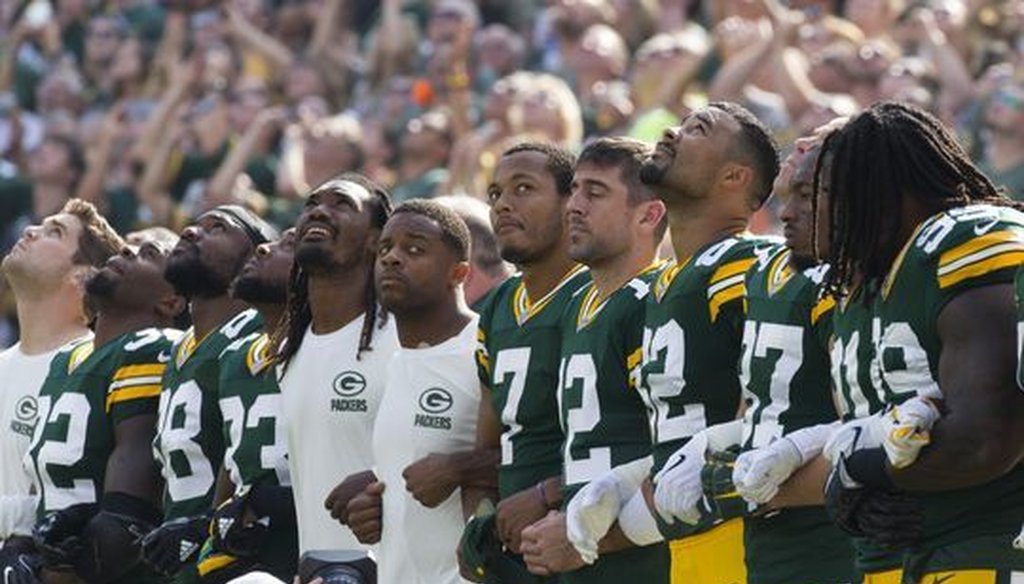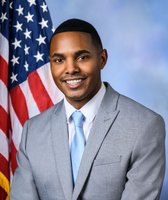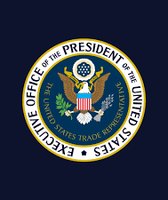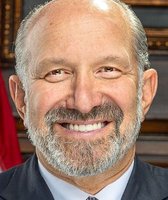Stand up for the facts!
Our only agenda is to publish the truth so you can be an informed participant in democracy.
We need your help.
I would like to contribute

Green Bay Packers players locked arms during the national anthem prior to the team's game on Sept. 24, 2017 at Lambeau Field in Green Bay, Wis. (Mark Hoffman/Milwaukee Journal Sentinel)
A national anthem controversy stoked by Colin Kaepernick, a Wisconsin-born former National Football League quarterback, burst into wildfire when President Donald Trump said that any NFL player who disrespects the American flag is a "son of a bitch" who should be fired.
On Sept. 26, 2017, four days after the president’s remarks, Green Bay Packers players issued a statement that began with:
The NFL family is one of the most diverse communities in the world. Just look around! The eclectic group of players that you root for, the coaches you admire, the people you sit next to in the stands, those high-fiving on military bases, fans at the sports bar or during tailgate parties — we all come from different walks of life and have unique backgrounds and stories.
The claim that the NFL family is one of the most diverse communities in the world is too vague for us to test on the Truth-O-Meter. There are countless numbers and types of communities -- people connected by geography, occupations, hobbies and more.
But with the Packers stepping into the fray by asking their fans to lock arms during the "Star Spangled Banner" at their next game -- against the Chicago Bears on Sept. 28, 2017 at Lambeau Field in Green Bay, we thought it worthy of examination.
Sign up for PolitiFact texts
What we found is that some parts of the NFL family are more diverse than others.
"When you talk about diversity," sports sociologist Harry Edwards told us, "you have to talk about in what context."
The controversy
Kaepernick, then a member of the San Francisco 49ers, began sitting during the national anthem during preseason games in August 2016. He later dropped to one knee instead. "I am not going to stand up to show pride in a flag for a country that oppresses black people and people of color," he said at the time.
Kaepernick, who is biracial, was raised by white adoptive parents, initially in Wisconsin but mostly in California. In March 2017, likely to be released by the 49ers, he opted out of his contract with the team. He has not signed with another team -- leading some, including Packers quarterback Aaron Rodgers, to say Kaepernick is being blackballed because of his protests.
As the new season got under way, players across the country sat or dropped to a knee during the anthem. The on-field demonstrations irked some fans, as well as the president. Campaigning in Huntsville, Ala., Trump said:
"We’re proud of our country. We respect our flag. Wouldn’t you love to see one of these NFL owners -- when somebody disrespects our flag -- to say, Get that son of a bitch off the field right now? Out, he’s fired. He’s fired! Wouldn’t you love it?"
The crowd responded with chants of: "USA! USA!"
During the games on Sept. 24, 2017, two days after Trump’s remarks, the Associated Press estimated that 204 players elected to either kneel or sit during the anthem. Several players from the Oakland Raiders, Buffalo Bills, Denver Broncos, New York Giants, Detroit Lions, New England Patriots, New Orleans Saints and Atlanta Falcons were among those who chose not to stand for the anthem. Three Packers -- African-American players Martellus Bennett, Lance Kendricks and Kevin King -- sat during the anthem at Lambeau Field.
The Miami Dolphins, Tampa Bay Buccaneers, Minnesota Vikings, Philadelphia Eagles, Chicago Bears, Indianapolis Colts, New York Jets, Los Angeles Chargers, the Packers and Washington Redskins stood with arms locked, though some players from those teams chose to kneel, according to USA Today.
Bennett, who has participated in the anthem demonstrations and helped write the Packers players’ statement, underlined that the protests center on racial inequality, saying: "People don't want to talk about racism. People don't want to talk about oppression. They want to be oblivious so they don't want to deal with it. And then when it comes to sports, people want to be even more distracted from what's really going on in the world."
The Packers players’ statement echoed a call by Rodgers for fans to lock arms, as the players plan to, during the anthem at the team’s next game -- the contest against the Bears.
U.S. racial breakdown
We’ll start our analysis by noting that the Packers players said the NFL family -- including, at the least, players, coaches and fans -- is "one of the most diverse" communities in the world, but doesn’t make a comparison.
So, diverse as in, a wide variety of races? Or simply more non-white than other communities? Diversity can also involve other variables, such as political views.
For one basis of comparison, here is the racial breakdown of the U.S. population as of 2016 based on U.S. Census data, according to William Frey, a Brookings Institution demographer and research professor at the University of Michigan Population Studies Center:
Race
Percentage
White
61%
Hispanic
18%
Black
12%
Asian
6%
Two or more races
2%
American Indian/Alaska Native
1%
(Frey and another think tank demographer, Audrey Singer of the Urban Institute, told us there are various problems trying to produce racial data on a global basis.)
Players and coaches racial breakdown
Now let’s look at groups within the NFL family.
For players and coaches, we’ll rely on the latest annual "racial and gender report card" produced by the Institute for Diversity and Ethics in Sport at the University of Central Florida. The report, released in September 2016, uses four racial categories (percentages are rounded).
NFL group
White
African-American
Latino
Asian
Players
27%
70%
1%
2%
Head coaches
81%
16%
3%
0
Assistant coaches
69%
28%
3%
1%
So, among players, the league is dominated by African-Americans.
But the vast majority of coaches are white.
Meanwhile, there is little diversity among players or coaches when considering other races.
Fans racial breakdown
When it comes to fans, there is less diversity among fans who attend games in the stadiums and more among fans who just watch on TV.
Edwards, an emeritus professor at the University of California, Berkeley who has worked as a consultant to the 49ers for 30 years and is a supporter of Kaepernick, told us that roughly 80 percent of people attending NFL games are white. He pointed to the cost of attending games, not to racism.
But NFL fans who don’t attend games are roughly as diverse as the overall U.S. population, reflecting the NFL’s broad popularity among people of all types, not just of all races, said Edwards, who is African-American.
"Whether you’re someone who favors Black Lives Matter or whether you’re someone who thinks Black Lives Matter is a terrorist organization, you probably have your favorite NFL team," he said.
The most recent Harris Poll asking sports fans about their favorite sport, which was done in December 2015, found that pro football was the most popular. Thirty-three percent of sports fans (adults who follow one sport or more) said pro football was their favorite sport; baseball was a distant second, at 15 percent. And Nielsen’s 2016 year in sports media report said that despite a slight decline in viewership, NFL football remained the most-viewed programming on television.
During the 2016 regular NFL season, Nielsen told us, this was the breakdown of total average viewership (for comparison, we've noted the U.S. population percentages):
Race
NFL viewership
U.S. population
White
70%
61%
Black
16%
12%
Hispanic
9%
18%
Asian
4%
6%
Those figures show, as Edwards said, that the people watching the NFL on TV are roughly representative of the American population.
(Representatives of the NFL and the NFL Players Association didn’t respond to our requests for information.)
Our Sources
PackersNews.com, "Packers players invite fans to join 'moment of unification,’" Sept. 26, 2017
Interview, Urban Institute demographer and senior fellow Audrey Singer, Sept. 27, 2017
Email, Brookings Institution senior fellow and research professor at the University of Michigan Population Studies Center William Frey, Sept. 27, 2017
Interview, University of California, Berkeley sociology professor emeritus Harry Edwards, whose research interests include the sociology of sports, Sept. 27, 2017
PolitiFact National, "A short history of the national anthem, protests and the NFL," Sept. 25, 2017
Milwaukee Journal Sentinel, "Bennett: People don't want to talk about racism," Sept. 27, 2017
University of Central Florida Institute for Diversity and Ethics in Sport, "2016 Racial and Gender Report Card: National Football League," Sept. 28, 2016
Interview, Population Reference Bureau senior demographer Kelvin Pollard, Sept. 28, 2017
Email, University of Central Florida Institute for Diversity and Ethics in Sport director Richard Lapchick, Sept. 27, 2017
Email, U.S. Census Bureau public affairs specialist Nadine Huntley-Hall, Sept. 27, 2017
PackersNews.com, "Aaron Rodgers asks Packers fans to lock arms in unity during Thursday's national anthem," Sept. 26, 2017
NIelsen, "Year in Sports Media Report 2016"
C-SPAN, Donald Trump remarks (44:40), Sept. 22, 2017
Email, Nielsen spokesman Michael Receno, Sept. 28, 2017






























